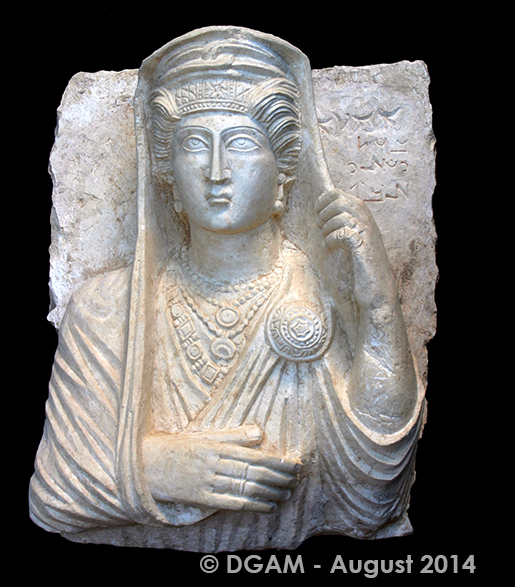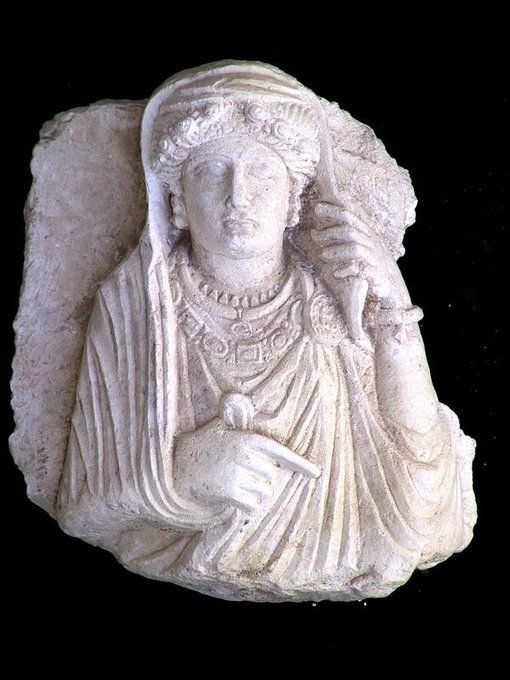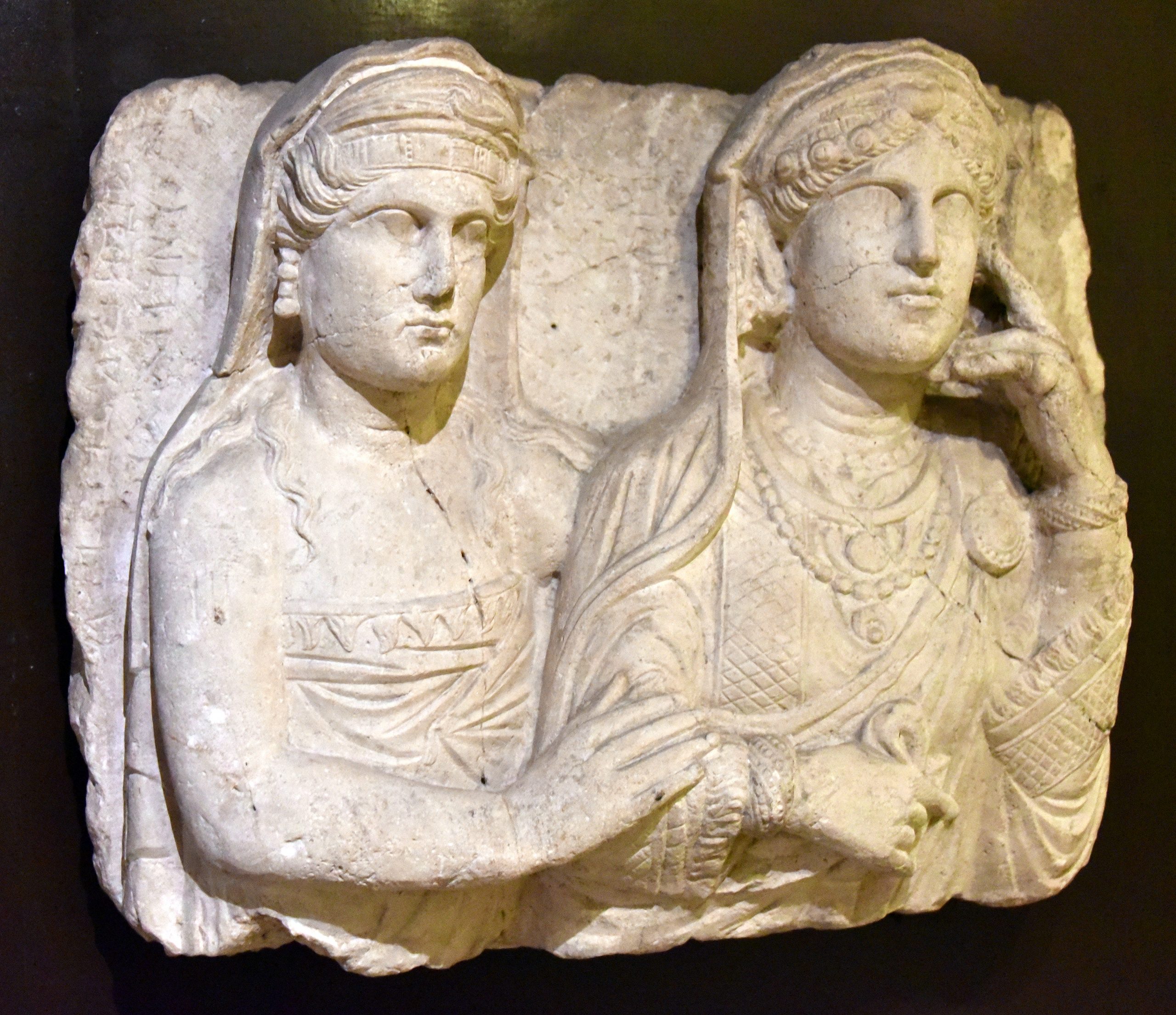Loculus relief of Berretâ, from the hypogeum of Artaban, in the southwest necropolis. 100-130 CE.
Woman wears ear-covers, and the triangle brooch with a key. We can see that the upper part of the brooch is strongly convex (it goes in an arc).

Photo ©Bruce Allardice

Photo ©Bruce Allardice

References: Katsumi Tanabe, Sculptures of Palmyra, I (Tokyo 1986), 31, pl. 233; Anna Sadurska, “L’Art et la société: Recherches iconologiques sur la sculpture funéraire de Palmyre”, Archaeologia 45 (1994), 11-23, esp. 11, 16, fig. 2; Anna Sadurska and Adnan Bounni, Les sculptures funéraires de Palmyre (Rome, 1994) 33, cat. 33, fig. 136; Dagmara Wielgosz-Rondolino, “Orient et Occident unis par enchantement dans la pierre sculptée. La sculpture figurative de Palmyre”, in Michel Al-Maqdissi and Eva Ishaq (eds.), La Syrie et le désastre archéologique du Proche-Orient, “Palmyre cite martyre” (Beirut, 2016), 66-82, esp. 70–71, fig. 5; Signe Krag, Funerary Representations of Palmyrene Women. From the First Century BC to the Third Century AD (Turnhout 2018), 35 n. 100, 39 n. 129, 95 n. 2, 105 n. 85, n. 87, 115 n. 63, 181, cat. 59; 4; Signe Krag, “Palmyrene funerary buildings and family burial patterns”, in Signe Krag and Rubina Raja (eds.), Women, children and the family in Palmyra (Copenhagen, 2019), 38-66, esp. 47 n. 80 n. 90, 49 n. 105, 62, cat. 57. Inscription: Delbert R. Hillers, Eleonora Cussini, Palmyrene Aramaic Texts (Baltimore, 1996), no. 2656. SOURCE A Report on the Confiscation of Looted Palmyrene Funerary Reliefs in Idlib by simat2017 | Jun 11, 2020












